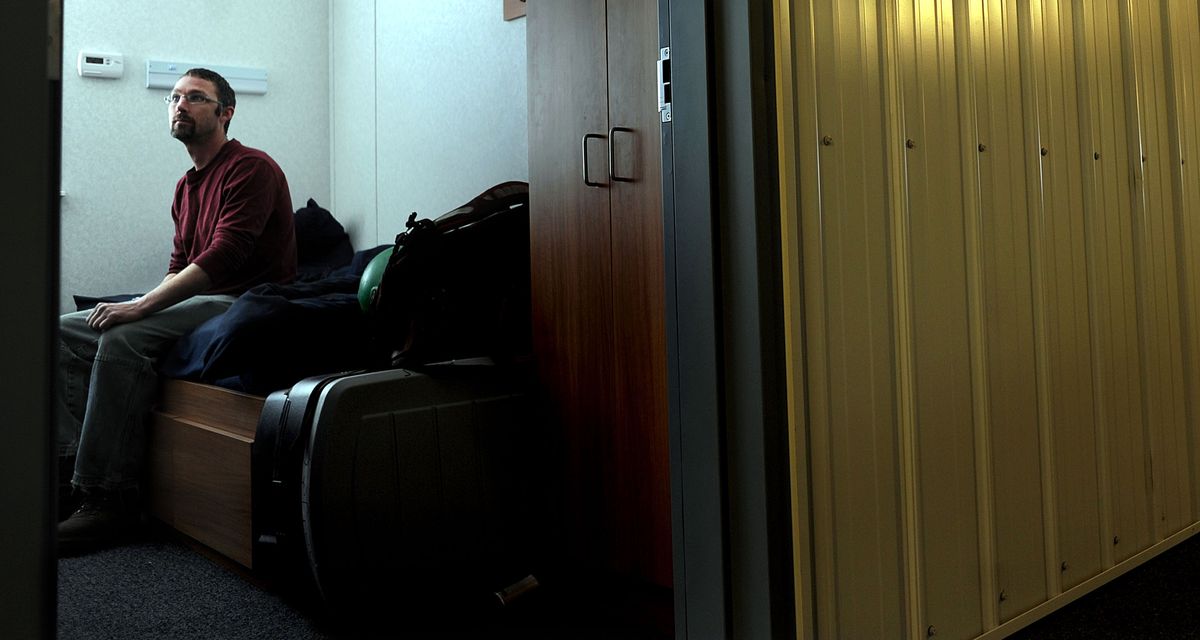Oil industry man camps offer no-stress living

WILLISTON, N.D. – What do you do if you’re an oil field worker in North Dakota who needs a place to sleep, shower and eat?
For nearly 10,000 workers, the answer is a “man camp.”
The barracks-style housing provides basic rooms and a cafeteria for workers who put in 12- to 16-hour shifts in the oil industry.
They’re called man camps for a reason: There are very few women in this sparsely populated corner of North Dakota. The Bear Paw and Williston lodges – two adjacent man camps about five miles north of Williston – house about 1,200 oil field workers. About 95 percent of the tenants are male.
Living with so many men was a switch for Jefrey Hayes, 42, of Toole, Utah. He’s used to being the lone male in a household that revolves around his wife and three daughters, which includes two teens who like to go shopping.
But Hayes has little time to socialize with other tenants at the man camp. An electronics technician for a fracking crew, he puts in 90- to 100-hour weeks, which alternate between day and night shifts. After working for 15 days straight, Hayes flies home to spend five days with his family.
“The man camp really simplifies your life,” said Clay Ness, 49, of Billings, who lived in an apartment before he moved into Bear Paw Lodge. “You don’t have to go shopping and prepare meals. That takes a lot of time. A trip to Wal-Mart was never less than one and a half hours.”
The Bear Paw and Williston lodges are run by Target Logistics. Oil field companies pay a daily rate between $120 and $160 per person to have their employees stay there. Employers work out arrangements with their employees; some get free housing while others pay a portion of the cost.
“We make sure that we supply them with anything they need,” said Raymond Crump, assistant manager at the Bear Paw and Williston lodges. “They’re here to eat, sleep, work and do it all over again.”
Despite so many men living in close quarters, the camps are surprisingly quiet. With the long hours they put in, tenants have little time for rowdiness or frat-house antics.
The rules are clear: No alcohol, no guns, no drugs. No smoking is allowed in the tenants’ rooms, and no women are allowed in the rooms, either. Workers must leave their boots and coveralls in the mud room to avoid tracking dirt through the hallways.
Spartan rooms contain a single bed, television, desk and chair. The housekeeping staff changes the sheets every other day.
For recreation, there’s a weight room, wireless Internet access, two saunas, pool tables and free movie checkouts. The cafeteria opens at 4 a.m. and stays open until 9 p.m. The lodges’ weekly grocery bill runs about $100,000. On Saturday nights, the cafeterias serve 16-ounce steaks.
While man camps offer a solution to North Dakota’s housing shortages, they’ve also strained local infrastructure. Rural Williams County recently extended a six-month moratorium on permits for new camps. After approving 9,700 beds in 18 months, the county had maxed out its ability to provide services, said Jill Edson, the planning and zoning coordinator.
Sewage from some camps is trucked two hours to the North Dakota cities of Minot or Dickinson for disposal. The local electric company can’t take more hookups until new substations are built.
Until the moratorium is lifted, Edson said only requests for expansions of existing man camps will be considered by the county.